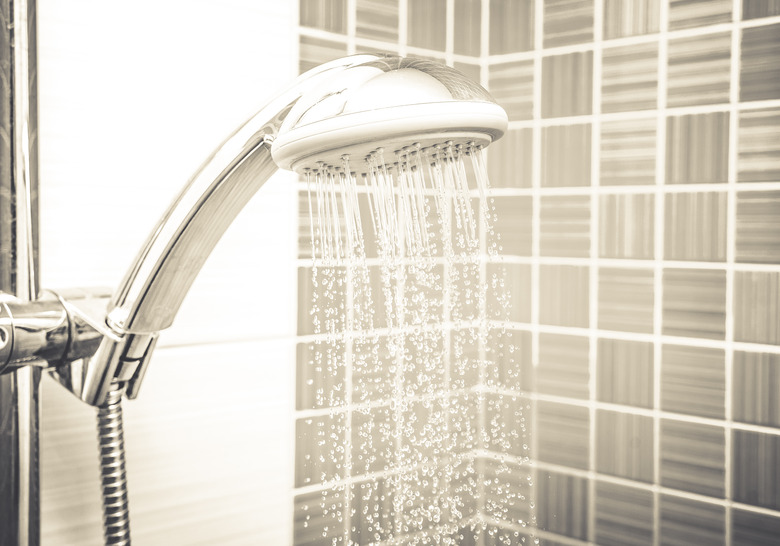How To Fix A Leaky Hand-Held Showerhead
We may receive a commission on purchases made from links.
Although a leaky showerhead doesn't waste much water or diminish the pleasure of taking a shower or washing your hair, a leak can be annoying. Two primary conditions cause a handheld showerhead to leak: a faulty head gasket or an ineffective connection between the showerhead and the flexible hose. Fortunately, the location of the leak usually points to the cause and repairs only take a few minutes.
How to Fix a Leaky Hand-held Showerhead
1. Remove the Flexible Hose
Turn off the water supply and undo the compression fittings on both ends of the flexible hose, using an adjustable wrench. Grasp the showerhead in one hand and unscrew the flexible hose fitting by turning it counterclockwise with the wrench. If the nut won't budge, wrap a rag around the shower handle and grip it with tongue-and-groove pliers while undoing the fitting.
2. Clean and Check the Threads
Clean off all traces of hardened plumber's tape and inspect the threads on the showerhead and hose ends for damage. On some heads, the flexible hose is connected on both ends with compression fittings containing rubber washers. If this is the case, you won't find plumber's tape adhering to the threads, but the rubber compression fitting washers may be cracked and worn.
3. Inspect the Rubber Gasket
Unscrew the showerhead from the handle by undoing the knurled threaded flange surrounding the perforated showerhead disk. If the thread is frozen, wrap a rag around the knurled section and loosen it with tongue-and-groove pliers. Remove the knurled nut and inspect the large rubber gasket fitted into the cavity under the flange. If it's cracked or hardened, you'll need to replace it.
4. Soak Off Mineral Deposits
Soak all components in a container of white vinegar for at least six to eight hours to soften any hard water deposits clinging to the metal, as suggested by Ben Franklin Plumbing. Then scrub the parts with a stiff-bristle nail brush, paying special attention to threaded sections. Rinse well under running water.
5. Tape the Threads
Stretch Teflon tape around the male threads on the shower handle, wrapping clockwise around the fitting. Pull the tape until it snaps and smooth the ragged ends into the threads.
6. Reconnect the Flexible Hose
Screw the flexible hose fitting onto the handle and tighten the nut securely with the adjustable wrench. Connect the other end end of the flexible hose to the faucet the same way. If the unit is equipped with compression fittings, skip the Teflon tape and go to the next step.
7. Install New Rubber Washers
Insert new rubber washers into the compression fittings on both ends of the flexible hose. Thread the fittings onto both the faucet and showerhead. Tighten both fittings with an adjustable wrench, but don't damage the rubber washers by over-tightening.
8. Install a New Rubber Gasket
Slip a new rubber gasket into the slot under the knurled threaded flange on the showerhead. Thread the flange onto the shower disk and tighten the knurled nut firmly by hand.
9. Test the Connections for Leaks
Turn the water supply back on; then turn on the faucet and check all connections for leaks. If the showerhead is equipped with compression fittings and you detect a leak, tighten the fittings another quarter turn with the adjustable wrench. If you spot a leak from under the knurled nut on the showerhead, wrap a rag around the fitting and tighten the nut another quarter turn with tongue-and-groove pliers.
